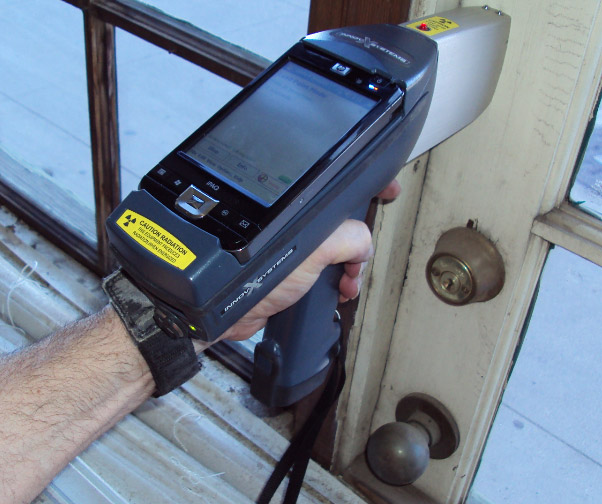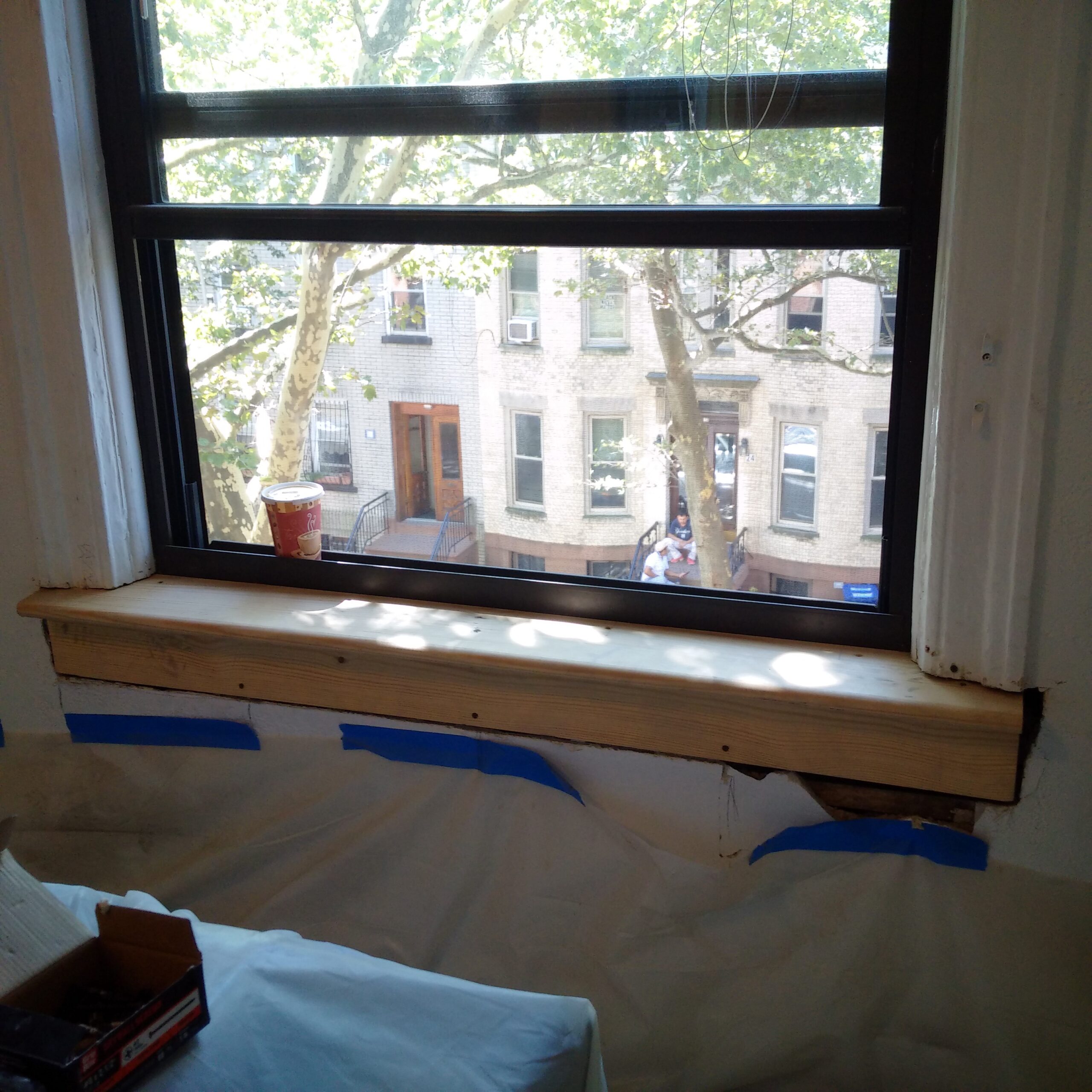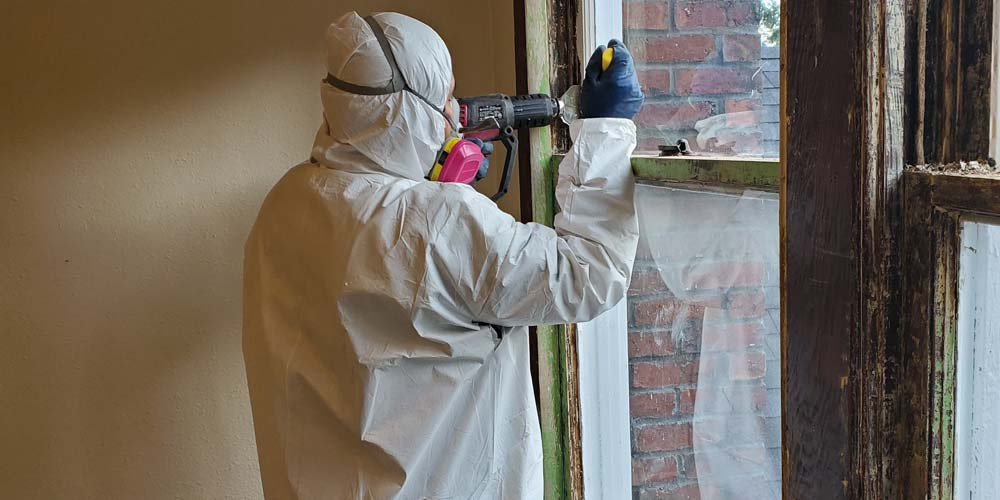Professional Lead Paint Removal Company-- Offering All NYC Boroughs
Wiki Article
Best Practices for Guaranteeing Safe and Comprehensive Lead Infraction Reduction
Dealing with lead violation abatement requires a multi-faceted strategy to guarantee both safety and conformity. First assessments utilizing advanced discovery methods such as XRF analyzers set the phase for a precise understanding of contamination degrees. Including appropriate containment strategies, consisting of closed obstacles and HEPA filtration, coupled with the usage of personal safety equipment (PPE) for workers, creates the backbone of a secure procedure. Precise cleanup procedures, featuring HEPA vacuuming and wet-wiping, are essential. Yet, it's the last clearance procedure, including complete evaluations and research laboratory testing, that truly confirms a lead-free atmosphere, making certain lasting safety. How do these methods adjoin to guarantee comprehensive lead abatement?
Preliminary Assessment
Conducting a first evaluation is a vital first action in lead infraction abatement. This stage encompasses a detailed examination of the building to determine the presence, degree, and specific areas of lead-based risks. Certified experts, such as qualified lead examiners or risk assessors, must perform a detailed site assessment, utilizing tools like X-ray fluorescence (XRF) analyzers to properly discover and gauge lead concentrations in paint, dirt, soil, and water.The evaluation must also consist of an evaluation of the structure's history, previous reports, and any grievances or health concerns reported by passengers - Lead Removal Contractors. Documenting the findings thoroughly is vital, as these records form the basis for establishing an efficient abatement strategy. A thorough analysis also includes tasting and laboratory analysis, which are important to validate the presence of lead and guide subsequent activities
In addition, it is crucial to connect the outcomes transparently to all stakeholders, including homeowner, lessees, and governing authorities. By ensuring that the initial evaluation is carried out with accuracy and roughness, experts can lay a strong structure for a targeted and effective lead reduction procedure, eventually securing public wellness and making certain conformity with governing criteria.
Correct Control
Appropriate control is important to stop the spread of lead impurities throughout abatement activities. Effectively managing control decreases the threat of lead dirt and debris migrating to non-work areas, therefore guarding both the setting and individuals outside the instant work area. To attain appropriate containment, an airtight obstacle of plastic sheet should be established around the workplace, guaranteeing all seams and sides are safely sealed. Lead Removal Contractors. This obstacle must prolong from floor to ceiling and be taped to stop any leakages.
Normal evaluations of the control area are essential to inspect for violations or weaknesses in the obstacle. Any type of recognized problems need to be quickly resolved to maintain the honesty of the containment. By adhering to these techniques, abatement jobs can effectively manage lead contamination and minimize involved wellness risks.
Employee Security
Making certain worker security is extremely important during lead reduction tasks to avoid work-related direct exposure to unsafe lead bits. Crucial procedures consist of the use of personal protective equipment (PPE) such as respirators, handwear covers, and full-body suits specifically designed to block lead dirt and fumes. Workers need to undertake thorough training on the proper use and maintenance of PPE, including in shape screening for respirators to make certain optimum efficacy.Engineering controls, such as regional exhaust ventilation systems, are vital in decreasing airborne lead concentrations in the workplace. Administrative controls must additionally be applied, consisting of restricting the period of direct exposure and revolving employees to reduce individual exposure times. Regular clinical surveillance and organic surveillance are indispensable for early detection of lead absorption, making it possible for prompt treatment and therapy.
Moreover, developing a decontamination procedure is important. Workers must follow stringent purification treatments prior to breaks and at the end of their shift to avoid lead dust from being carried outside the workspace. This includes extensive hand and face washing with lead-specific cleaning representatives and altering out of polluted clothes.
Meticulous Cleaning
Keeping a risk-free workplace expands beyond worker defense and includes precise cleanup to make certain lead bits are thoroughly gotten rid of from the website. The process of thorough clean-up is crucial in read preventing the recontamination of the moderated area and safeguarding both existing and future residents.To achieve a thorough clean-up, all job areas have to be systematically sanitized. This includes using specialized HEPA (High-Efficiency Particulate Air) vacuum and wet-wiping methods to record and eliminate great lead dust that might have decided on surface areas. It is crucial to clean all straight surface areas, including floorings, window sills, and counter tops, along with vertical surface areas that might have trapped lead fragments.
Workers should put on suitable individual safety devices (PPE) throughout clean-up to stay clear of direct exposure to recurring lead dirt. Made use of cleaning products such as wipes, sponges, and mop heads should be thrown away in accordance with unsafe waste disposal laws.

Final Clearance
Last clearance is the crucial wrapping up stage of lead reduction that identifies whether the website is secure for reoccupation. This critical step includes thorough inspection and testing to confirm that all lead threats have been efficiently gotten rid of. The procedure starts with an aesthetic inspection read review by a qualified lead-based paint assessor or risk assessor to guarantee no noticeable dirt or debris stays. This is followed by accumulating dirt wipe examples from various surfaces, including floors, windowsills, and various other straight surfaces. Lead Removal Contractors.
Last clearance testing not just shields future passengers however also ensures conformity with regional, state, and federal laws. It serves as a documented recognition of the abatement service provider's adherence to market ideal methods. Guaranteeing a comprehensive and effective final clearance is essential in securing public health and wellness and cultivating count on the abatement procedure.
Conclusion
Making sure risk-free and thorough lead offense abatement requires a multifaceted technique encompassing preliminary analyses with sophisticated discovery methods, efficient control techniques, rigorous worker security methods, and precise clean-up treatments. The final clearance phase, including detailed assessments and research laboratory testing, is vital to validate compliance with EPA requirements. Adherence to these ideal techniques guarantees a risk-free setting for occupants, reduces health and wellness threats, and upholds regulatory demands, consequently advertising public health and safety in lead-affected areas.Report this wiki page